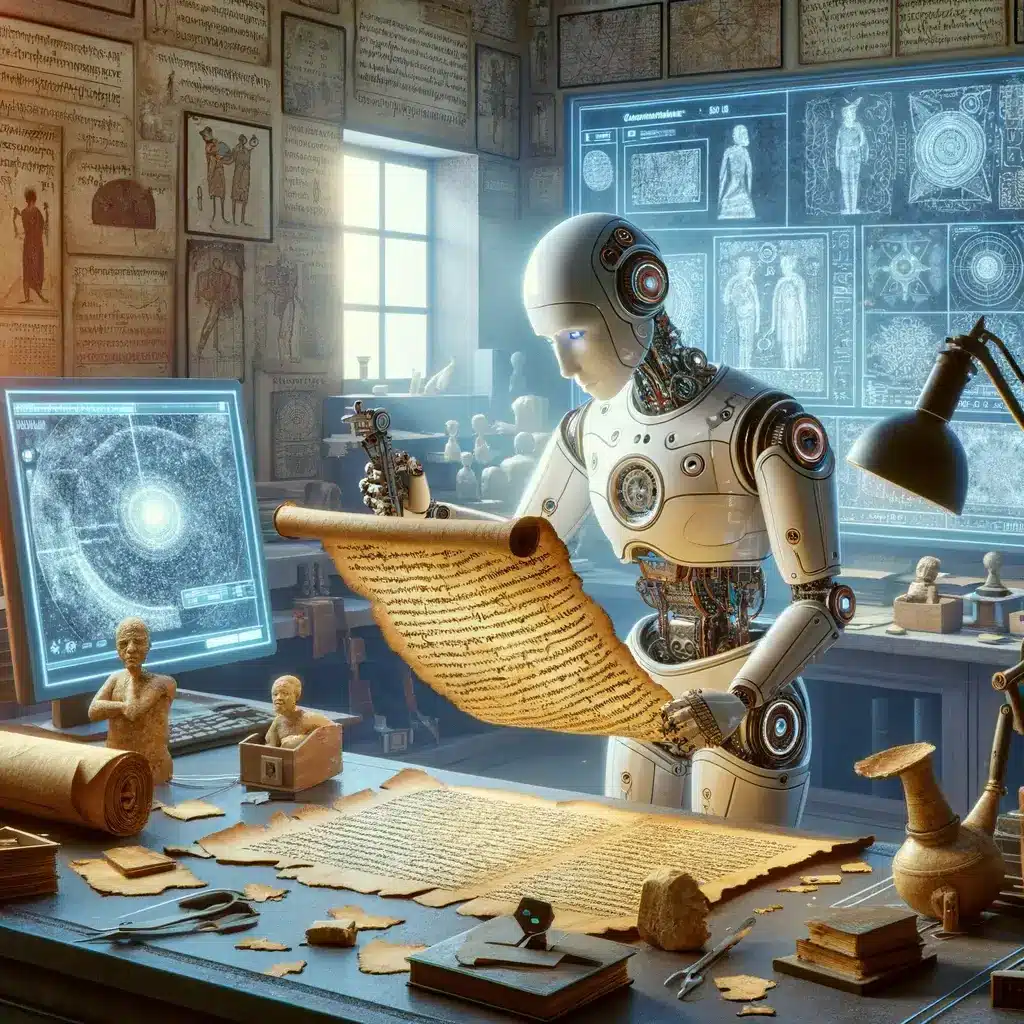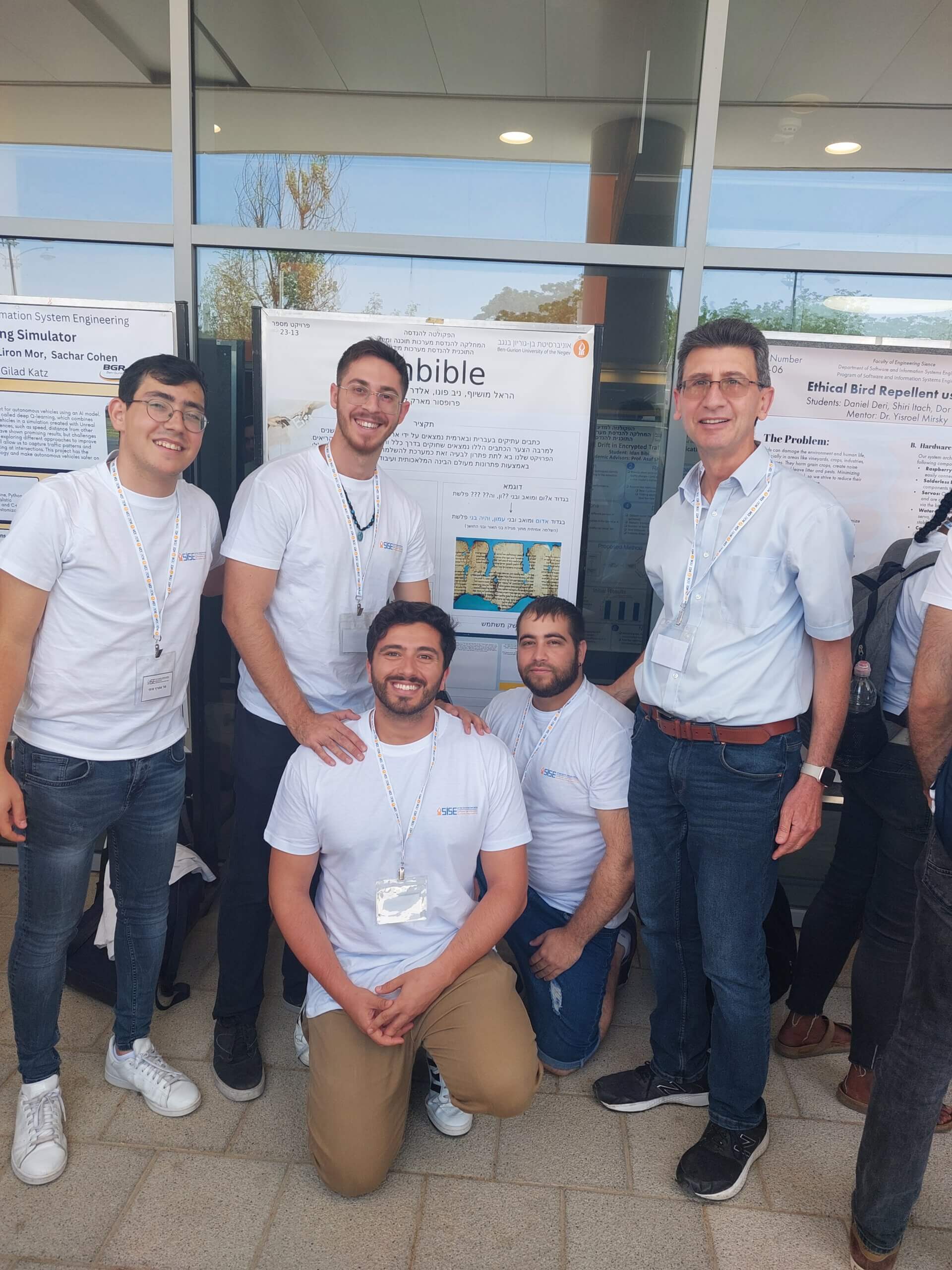Students in the fourth year of the Department of Software and Information Systems Engineering at Ben-Gurion University of the Negev decided to produce an up-to-date answer to the ancient writings and under the guidance of Prof. Mark Lest, developed an artificial intelligence system that completes the missing sections in the ancient texts

Ancient archaeological findings related to the Jewish people are important for strengthening identity, the connection to culture and history, but many of them have been torn or faded over the years. Students from the Department of Software and Information Systems Engineering at Ben-Gurion University of the Negev developed an artificial intelligence system that succeeds in completing missing sections, including single characters, whole words or parts of words, as part of their final project. the project was introduced Recently at the Central European Conference of Computational Linguistics (EACL 2024 which took place on the island of Malta.
Inscriptions in Hebrew and Aramaic serve as an essential source of information about the ancient history of the Near East. Unfortunately, some parts of the texts have become illegible over time. Special experts, called epigraphists (decipherers of inscriptions), use manual procedures to evaluate the missing content, but this procedure is time-consuming and in many cases does not bring researchers to unequivocal conclusions.
Niv Pono, Harel Moshiov, Elder Karol, and Iti Asraf, Fourth-year students in the Department of Software and Information Systems Engineering at Ben-Gurion University of the Negev decided to produce an up-to-date response to the ancient writings and under the guidance of Prof. Mark Lest, developed an artificial intelligence system that completes the missing sections in the ancient texts.
This study is the first to apply an artificial intelligence system to complete damaged inscriptions in ancient Hebrew and Aramaic, using the letters of the Hebrew alphabet, which consists mainly of consonant characters. The 'ensemble' model that they developed combines a number of models trained on the verses of the Bible in Hebrew and Aramaic, assuming that the language of the Bible (without punctuation) is closer to the language of ancient writings compared to the modern Hebrew language. So far, a number of models have been implemented that predicted whole words well, but less well predicted word parts or missing characters.
The research method was based on 1,071 randomly selected verses from the Bible (536 for testing and 536 for verification as a control group). The remaining 22,144 verses of the Bible were used to adjust the parameters of the models trained in advance on modern Hebrew text databases to ancient Hebrew texts. The user enters into the system a text that includes missing parts and for the missing parts the system will return several options, including the probability of each possible completion - a single word, a letter or a partial word.

The 'ensemble' model was found to be extremely useful for restoring damaged Hebrew and Aramaic inscriptions. "We believe that this approach can be easily extended to writings in other ancient languages that are morphologically rich," said Prof. Lest and added: "In our ability to help historians who are engaged in the reconstruction of ancient Jewish scrolls and writings as their life's mission to complete the missing text as accurately as possible."
The research paper based on the final project was presented at the Central European Conference of Computational Linguistics (EACL recently held on the island of Malta.
More of the topic in Hayadan:

3 תגובות
There is also the matter of copyright, which photographers are so jealous of that they can demand three years' worth of the website's income for one photo.
The site became obsessed with images created in DALEE.
I would be much happier for an image relevant to the content.
Something you can learn from, and not an unnecessary illustration image made with AI.
Fascinating, I like combinations of knowledge from different fields